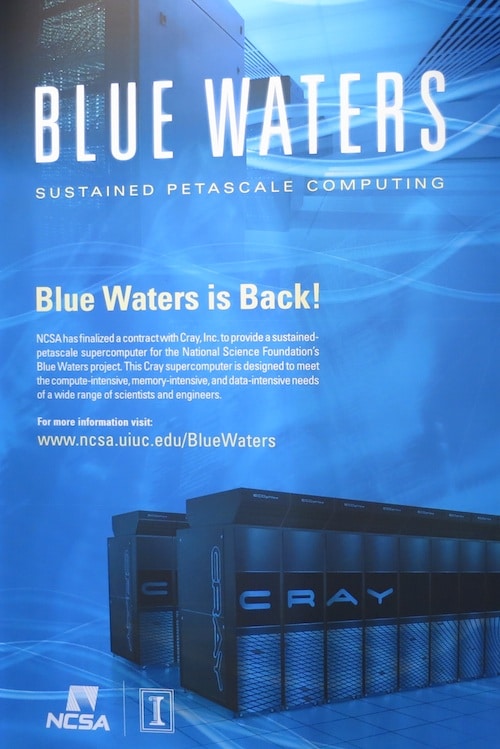The Blue Waters project, deployed by the National Center for Supercomputing Applications, anticipates that its supercomputer will be one of the most powerful in the world, capable of a staggering 1 Petaflop (one quadrillion calculations per second) of sustained performance using eight scientific applications. With it, scientists will be able to discover things that haven’t been possible before, such as understanding how the cosmos evolved after the Big Bang to simulating complex engineered systems.
The Blue Waters project, deployed by the National Center for Supercomputing Applications, anticipates that its supercomputer will be one of the most powerful in the world, capable of a staggering 1 Petaflop (one quadrillion calculations per second) of sustained performance using eight scientific applications. With it, scientists will be able to discover things that haven’t been possible before, such as understanding how the cosmos evolved after the Big Bang to simulating complex engineered systems.

This the compute-intensive, memory-intensive, and data-intensive supercomputer will have over 17,000 disks and a bandwidth to near-line storage of 100 GB/s.
The full specifications of Blue Waters supercomputer are robust to say the least:
- Cray XE6 cabinets: >235
- Cray XK6 cabinets: >30
- Total cabinets, including storage and server cabinets: >300
- Compute nodes: >25,000
- Usable storage bandwidth: >1 TB/s
- Aggregate system memory: >1.5 PB
- Memory per core: 4 GB
- Gemini network cables: Over 9,000 (~4,500km of single wires)
- Interconnect topology: 3D Torus
- Number of disks: >17,000
- Number of memory DIMMS: >190,000
- Usable storage: >25 PB
- Peak performance: >11.5 PF
- Number of AMD processors: >49,000
- Number of AMD x86 cores: >380,000
- Number of NVIDIA GPUs: >3,000
- External network bandwidth: 100 Gb/s scaling to 300 Gb/s
- Integrated Near Line Environment: Scaling to 500 petabytes
- Bandwidth to near-line storage: 100 GB/s
Though IBM, the original financer, pulled out of the Blue Waters project due to higher than expected costs, Cray Inc. picked up the contract three months later and stated that the supercomputer will be installed in phases during the first nine months of 2012 at the University of Illinois’ National Petascale Computing Facility. The building will take advantage of the campus-wide water cooling and the colder temperatures in Illinois during the winter to help reduce energy consumption.
